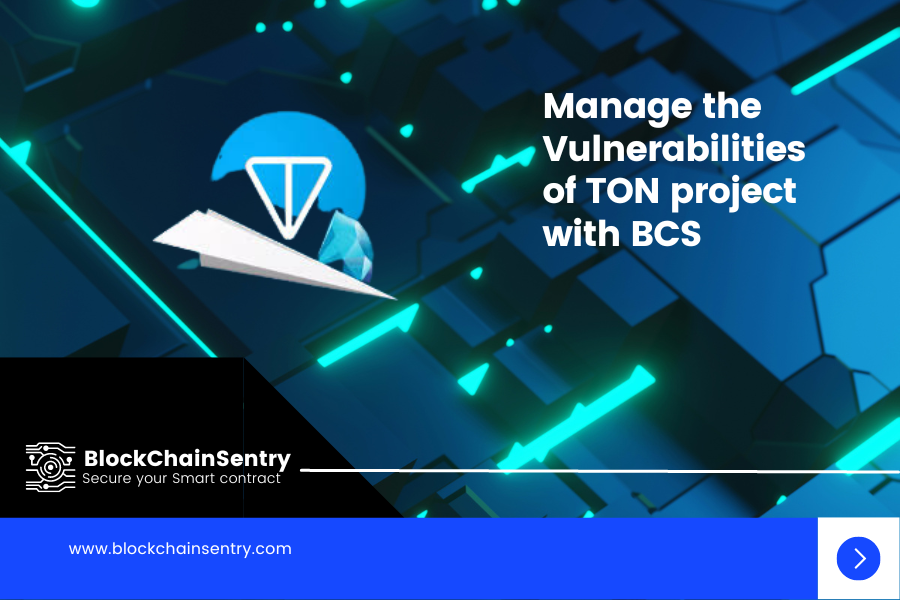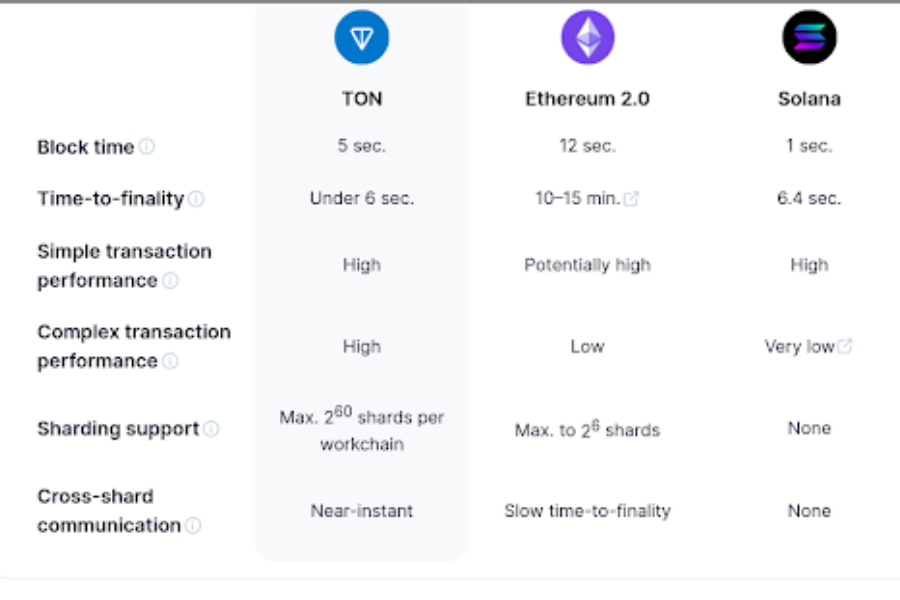Manage the Vulnerabilities of TON Smart Contracts with BCS

Messaging platforms have opened up the fastest communication channel for society and now everyone is connected instantaneously through this simple and effective medium. The Telegram messaging platform is widely used across the globe. Using blockchain technology, Telegram messaging platform has developed its own blockchain network called TON (The Open Network). After 5 years of Telegram’s inception(2013), TON Blockchain was launched in 2018. Initially, The Open Network (TON) blockchain was developed for its communication network users. Now TON is a decentralized developer’s community run by the TON Foundation aiming to establish a user-friendly blockchain ecosystem to onboard 700 million users of Telegram on web3.
TON blockchain was developed with the objective to provide a platform for developing decentralized applications and smart contracts with better security, speed, and scalability features. Currently, this layer 1 blockchain hosts 1,820,908 accounts and 150,068,943 validator’s stakes to maintain the blockchain network.
Let’s try to decode more about TON, its benefits, security challenges, and more in this blog post.
What is TON?
TON network is based on a multi-blockchain architecture that consists of a master chain and several blockchains, and sharding protocols. This design makes the TON network faster, more secure, and more scalable to deploy decentralized applications. TON blockchain works on a proof-of-stake consensus mechanism with a transaction throughput of 1 million tbs (transaction per second). TON blockchain is the combination of multi-blockchain, peer-to-peer blockchain network, with distributed file storage technology and a network anonymizer layer, a distributed hash table, TON DNS, a service to assign human-centric accounts, smart contracts, network nodes, and TON Payments. The multi-chain architecture is compatible with Ethereum and allows the network to communicate with various blockchains, making it easy for developers to connect with other blockchain mainnet such as Binance smart chain, Ethereum, Polygon, USDC, USDT etc. Initially, the native currency of the TON blockchain was Gram and now it is called Toncoin.
Why is it important?
Interoperability of blockchain networks and transaction speed are big challenges for the blockchain community. TON blockchain architecture follows a multi-chain structure which can connect with multiple blockchains and offers easy interoperability with other networks and faster transaction speed amongst these networks. The architectural design of TON consists of a master blockchain with multiple working blockchains. This master blockchain maintains general information about protocols, validators, its workchain and its shards, work hashes, and blocks of shard chains. The workchains store information about smart contract transactions and value transfers. These workchains can split into shard chains to manage the transactions of a subset of accounts in case of network congestion. This helps in improving the transaction speed on the TON network and reduces network load. The transaction speed of the TON blockchain in comparison with its counterparts like Ethereum and Solana is higher.

Source: https://ton.org/
Security Challenges
TON is a relatively new blockchain network with its unique multi-chain architecture. The popularity of TON Blockchain is attracting blockchain developers to build new projects using TON FunC and c++ languages. These are comparatively more complex than solidity and require detailed code review to avoid smart contract malfunctioning.Vulnerabilities in a TON smart contract are similar to solidity based smart contracts. Smart contract code can become vulnerable if the publicly known vulnerability issues are not checked by the developer during the development phases. Any smart contract code development must follow best practices for reviewing the code and eliminating the possible vulnerabilities at multiple developmental stages of the code. TON smart contracts should be developed by following coding standards and guidelines published in the SWC registry.
Automation tools such as the BlockChainSentry TON scanner review the code and check for more than 32 vulnerabilities that may occur during development or testing phases of the code. This eliminates any vulnerability possibly missed due human-errors, as the tool detectors will not miss any listed vulnerability and indicate it with severity and remediation.
The BlockChainSentry TON scanner thoroughly tests the TON smart contract code and identifies any potential code security issues and provides recommendations for remediation.
TON Smart contract developers must follow a vulnerability disclosure process where they should maintain the vulnerability reports of scanning the TON smart contracts at multiple touchpoints and these reports can give clearance for progressing the code from development, to testing, to production stage then make it ready for deployment. Before deployment also, a third party external audit is an important security best practice that must be followed to get a go ahead for smart contract deployment on the TON network.
What BCS has built
BlockChainSentry has developed a TON scanner that helps TON DApp developers to review the TON smart contract code and identify the code vulnerabilities.
Currently, the BCS scanner can scan publicly known vulnerabilities of TON smart contracts and provide the severity and remediation steps for them. As the TON blockchain use cases and security challenges are identified, BlockChainSentry will add more detectors to support TON blockchain projects to be more secure.
Any blockchain network where numerous DApps are hosted, cannot be 100% secure from cyber threats. TON blockchain can connect with multiple blockchains. At the same time the exposure of the attack vector also increases in such cases. The architectural advantage of the TON network allows faster transaction speed and finality. All smart contract transactions are executed on TON Virtual Machine (TVM) which allows complex smart contract deployment.
The investor community still sees a slight risk in Toncoin, due to initial hiccups in its launch as an alternative to the previous native coin Gram. Therefore, the TON community has given utmost importance to security and has implemented several features like TON Proxy, TON DNS for the safe transaction and chain integrations. The community also runs a bug bounty program for identifying TON blockchain Vulnerabilities.
BCS TON Smart contract Vulnerability Scanner features
- TON Vulnerability Check Automation tool
- Upload the TON file and scan it on BCS platform to see results on the dashboard
- Downloadable Vulnerability Management Report.
- Scan TON code in development, testing, and production stages and remediate any vulnerability and new vuln occurring during the new phase of development and ensure vulnerability-free smart contract code before deployment.
Why you should consider using BCS TON scanner
The BCS TON scanner is extremely useful for developers who are considering using the TON network for developing smart contracts. It facilitates code review to identify vulnerabilities and code audits. The TVM allows complex smart contracts to be deployed on the network, so it is important for the developers to review the code at multiple touchpoints of its development. As smart contract security best practice, using an automation scanning platform can eliminate cyber security risks that may arise due to code weakness and later become unfixable.
BlockChainSentry advises TON smart contract developers to use BCS TON scanner from the beginning of the smart contract development and enjoy the multiple benefits offered by the TON network to the blockchain community.